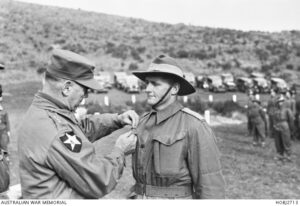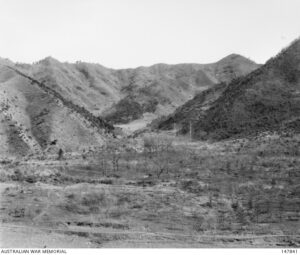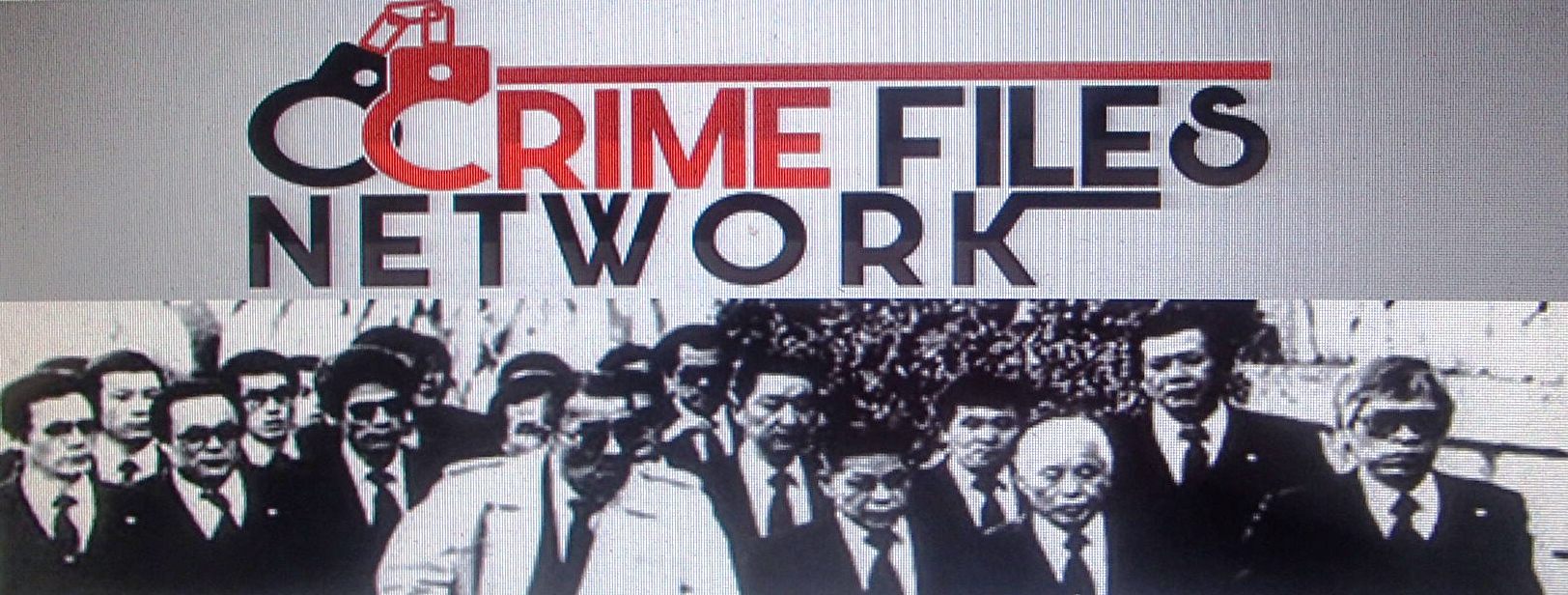The Battle of Kapyong
In April 1951, the 3rd Battalion RAR were positioned in the Kapyong Valley as part of United Nations operation to establish a defensive buffer against a communist advance towards the South Korean capital Seoul.

On 23 April 1951, after breaking through forward positions held by the South Korean Army, Chinese forces assaulted United Nations defensive positions in the hills overlooking the Kapyong River, including those held by Australians. During the night, wave after wave of Chinese troops attacked the Australian positions.

By the morning of 24 April elements of the Australian force had been forced to withdraw while others found themselves cut off up to four kilometres behind the most forward Chinese troops.
The Australians continued to resist throughout the day but were forced to make a fighting withdrawal under very difficult conditions and rejoin the remainder of the Commonwealth Brigade late in the day.

On 25 April the focus of the Chinese attack shifted to the positions held by the Canadian forces, who were able to deflect them with the assistance of the New Zealand artillery batteries whose fire had recently protected the Australians.
By the afternoon of 25 April the Chinese at Kapyong were exhausted and made no further attacks. The Commonwealth forces’ efforts had halted the Chinese advance.
Thirty-two Australians died in the Battle of Kapyong, 59 were wounded and three were taken prisoner.

The Australian and Canadian battalions were each awarded a United States Presidential Distinguished Unit Citation for their part in the Battle.
The Korean War

The Korean War began on 25 June 1950 when communist North Korea launched an invasion of South Korea.
The Australian Government quickly became involved in the war, committing personnel from the Navy, Army and Air Force to fight as part of a United Nations force.
Fighting in the Korean War ended with the signing of an armistice on 27 July 1953. Post-armistice, Australian forces remained in Korea in a peace-keeping role until 1957.
More than 18,000 Australians sailors, soldiers and airmen served during the Korean War, including some 50 nurses. Of those more than 1500 were injured, 340 killed, 30 taken prisoner and 43 who are still listed as missing in action.

The USA lost more than 36,000 people. Millions of Korean and Chinese soldiers and civilians were killed.
North and South Korea still remain in a state of conflict today.

Further information on recently digitised collections and other resources relating to the battle of Kapyong and the Korean War are available here:
EXDOC151 Photographic transparency of the American Presidential Unit Citation awarded to 3 Battalion, The Royal Australian Regiment, 1951
PR83/154 Knowles, Patrick (Lance Corporal, 3RAR, AMF)
PR89/055 O’Dowd, Bernard Shelley (Lieutenant Colonel, 3RAR, AMF b.1918)
RC11577.1293 Map of Kisan-Ni, Korea
RC11577.1298 Map of Kap’yong, Korea
RCDIG1027559 Australian Army Unit War Diaries
AWM85 4/5 – 3 Battalion, The Royal Australian Regiment
S01903 Sergeant Reginald Amos Bandy interviewed by Bill Bunbury about the Battle of Kapyong, Korean War
S00019 “Ground Force USA”. A weekly radio program produced in the Tokyo studios of the Far East Network of the United States Armed Forces Radio Service. This program pays tribute to the 3rd Battalion, Royal Australian Regiment for its outstanding conduct at the Battle of Kapyong in Korea 24–25 April 1951 for which it was awarded the United States Distinguished Unit Citation
F04842 Reflections on training and leadership: an interview with Lieutenant-Colonel Ben O’Dowd
![]()

